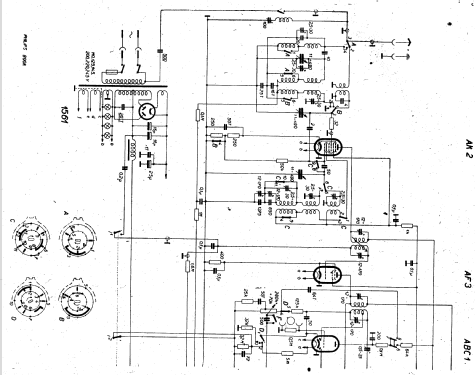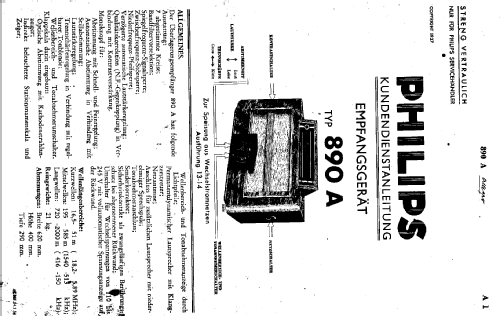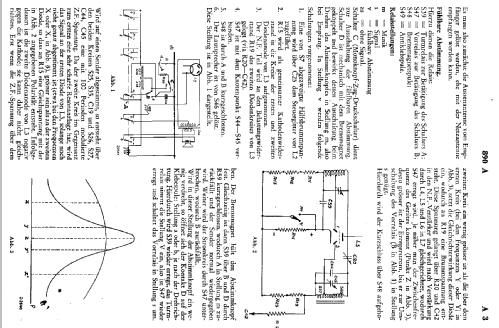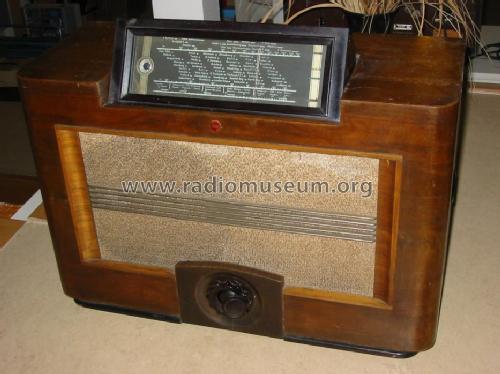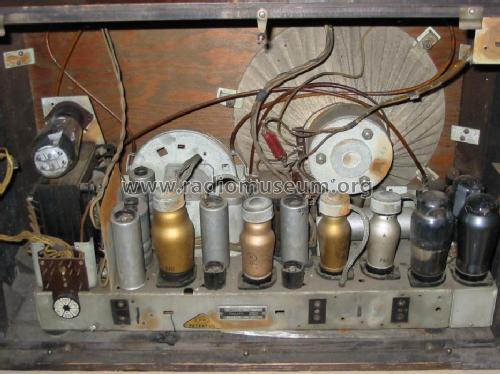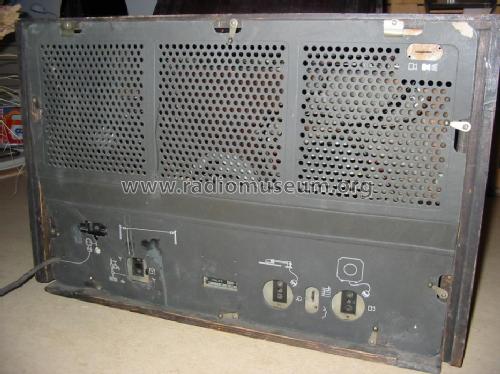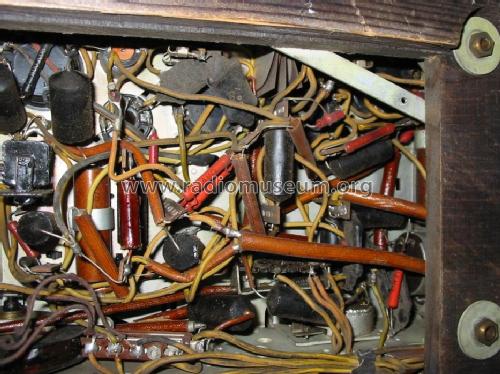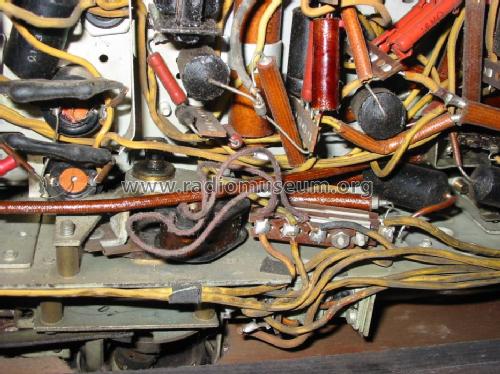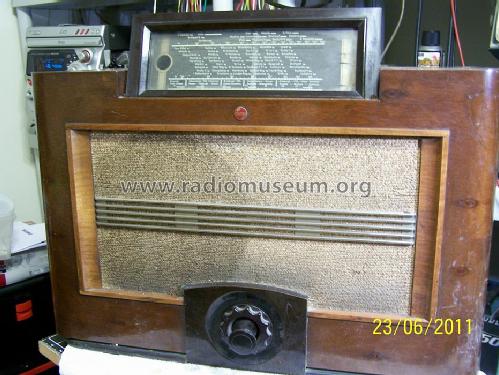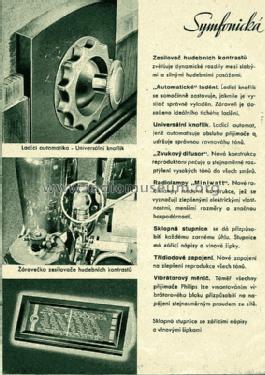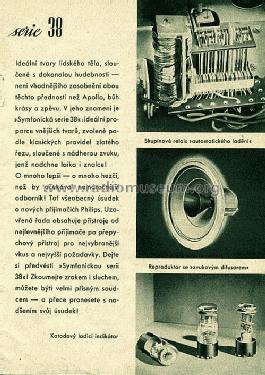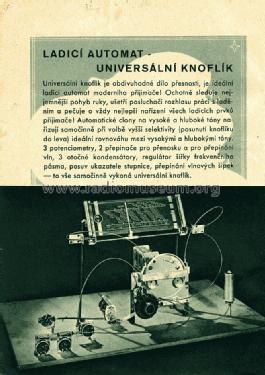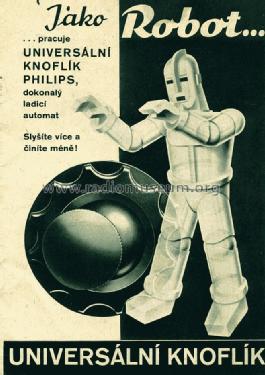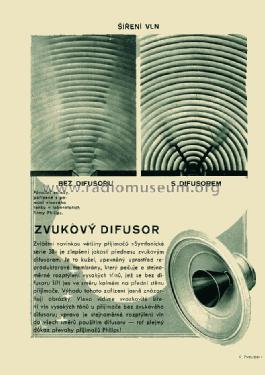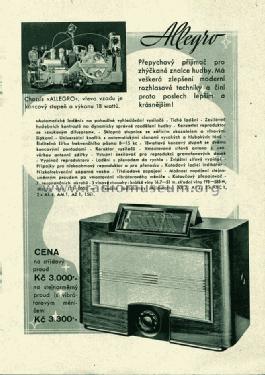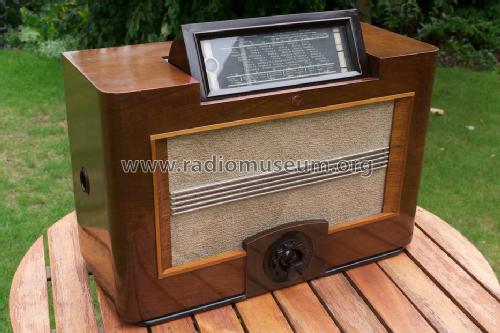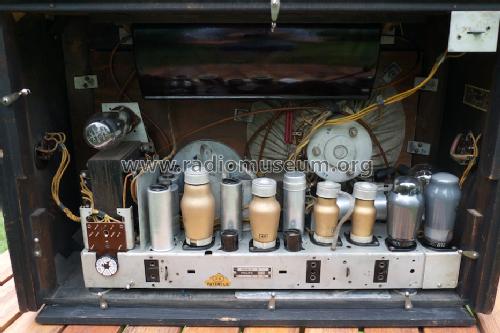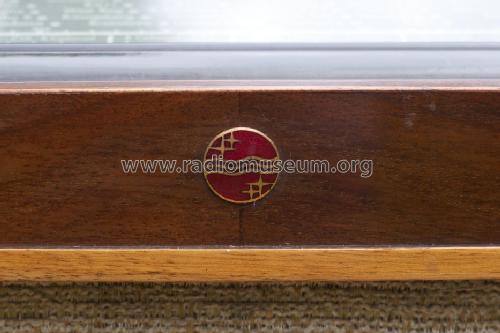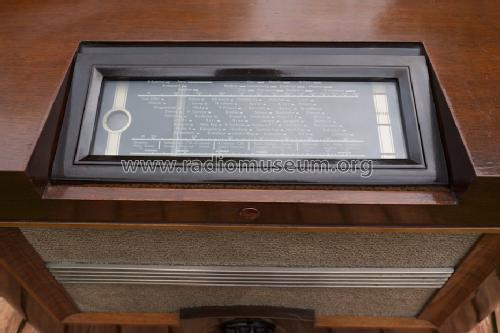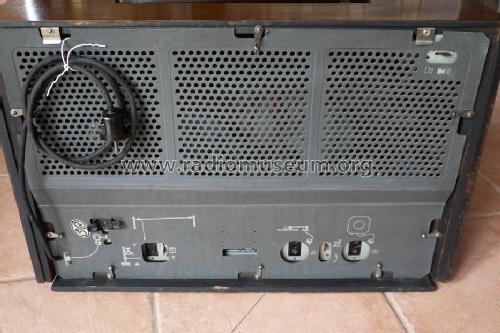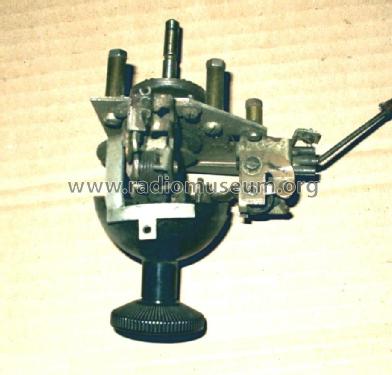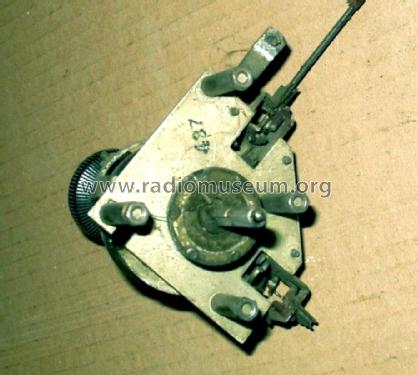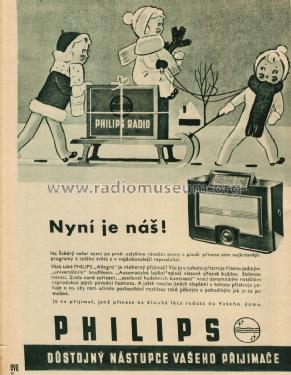Allegro 890A -14
Philips akc. spol., Praha-Hloubetin
- País
- Cecoslovacchia
- Fabricante / Marca
- Philips akc. spol., Praha-Hloubetin
- Año
- 1937/1938
- Categoría
- Radio - o Sintonizador pasado WW2
- Radiomuseum.org ID
- 23182
Haga clic en la miniatura esquemática para solicitarlo como documento gratuito.
- Numero de valvulas
- 9
- Principio principal
- Superheterodino en general; ZF/IF 128 kHz
- Número de circuitos sintonía
- 8 Circuíto(s) AM
- Gama de ondas
- OM, OL y OC
- Tensión de funcionamiento
- Red: Corriente alterna (CA, Inglés = AC) / 110-245 Volt
- Altavoz
- Altavoz dinámico (de imán permanente) / Ø 26 cm = 10.2 inch
- Material
- Madera
- de Radiomuseum.org
- Modelo: Allegro 890A -14 - Philips akc. spol., Praha-
- Forma
- Sobremesa apaisado (tamaño grande).
- Ancho, altura, profundidad
- 610 x 403 x 260 mm / 24 x 15.9 x 10.2 inch
- Anotaciones
-
Schaltbare "fühlbare" Abstimmung.
- Precio durante el primer año
- 3,000.00 CZK
- Ext. procedencia de los datos
- Erb
- Procedencia de los datos
- Ceskoslovenske prijimace 1933-1945, Baudys 1947
- Otros modelos
-
Donde encontrará 162 modelos, 137 con imágenes y 125 con esquemas.
Ir al listado general de Philips akc. spol., Praha-Hloubetin
Colecciones
El modelo Allegro es parte de las colecciones de los siguientes miembros.
Contribuciones en el Foro acerca de este modelo: Philips akc. spol.,: Allegro 890A -14
Hilos: 4 | Mensajes: 10
Hello, Friends! I am searching for a usable AM1 magisches auge for my 890A. Usable, so long as it is not too dark. I hope that there is one out there! Please respond via e-mail to:
ac1y[A*T]nc.rr.com
Many thanks!
Sandy Gerli, AC1Y
Alexander Gerli, 19.Jun.11
Hello, friends,
I have acquired an Allegro 890A and am waiting for shipment. I have several questions about this interesting Monoknopf Philips:
On the schaltbild, there seems to be a rectifier tube (gleichrichter-roehre) at the input side of the audio output transformer. What putpose does this tube serve? I have been around radios a long time, and have been a ham radio operator for 45 years, and I have never seen this arrangement before!
Also, I want to begin gathering a set of spare roehren. Perhaps the most difficult to find will be the AM1 magisches auge. Is there anyone on RMorg who can help me locate one of these in good condition, with usable brightness?
Also, I would like to find several ABC1, AK2 and AF3 and 1561(RGN2004).
If anyone who has this radio can offer me any recommendations as to restoration, I would greatly appreciate it. I have plenty of spare capacitors for the power-supply and interstage bypass requirements.
Many thanks to everyone!
With 73,
Sandy Gerli AC1Y
Alexander Gerli, 03.Jun.11
Frank Blöhbaum, 25.Jan.05
Frank Blöhbaum, 29.Jan.04
